Unless you live under a rock (It’s okay, I do too, it’s quieter.), then you know that houseplants are hot.
You can thank broke millennials for breathing new life into the houseplant trend. For many in this generation, houseplants stand in for pets their lease won’t allow, kids they can’t afford, or a yard their apartment doesn’t have.
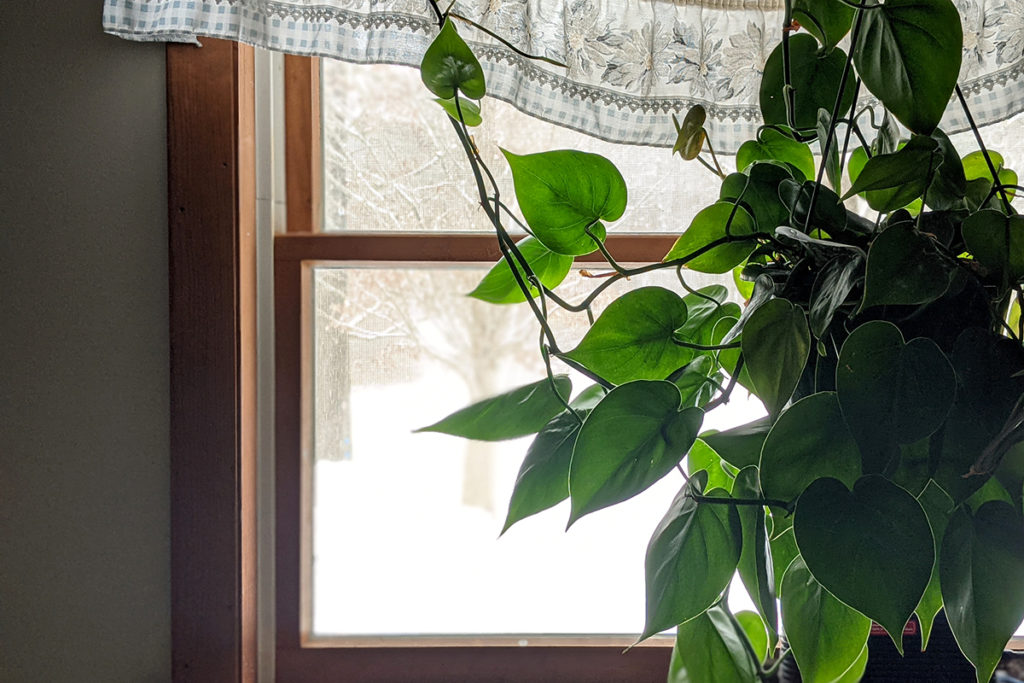
My own daughter assures me I have quite a few grandplants. I even get pictures of them as they grow.
Houseplants haven’t seen popularity like this since the 70s, and oddly enough, many of the hottest plants on Instagram and TikTok are the same plants that were popular back then. Could it be? Have we finally found common ground for both millennials and baby boomers to stand on?
Don’t ask me; I’m a gen x-er.
The Appeal of the Underdog
In this article, we will not talk about the popular plants. No, I think they have received enough attention. Today we’re going to have a look at the underdogs. The forgotten plants that don’t get the hashtags and catchy captions like Monstera Mondays.
The botanical world is huge and not limited to the Oh-My-Gosh-Top-Five-Need-These-Because-Everyone-Else-Has-Them Instagram favorites.
As most serious houseplant enthusiasts will tell you, once you get past the Pokémon mentality (gotta catch ‘em all), you begin to get picky about your plants. You thin out your collection, and it becomes more curated. And that’s where underdogs shine.
Plus, when it comes to these plants, they’re usually inexpensive.
And finally, there’s the number one reason to grow an underrated plant – because you like them.
Houseplants are supposed to be something that brings you joy. If you hate how finicky your $50 maranta is, but you secretly covet those $3.99 supermarket African violets, then give the diva maranta to a friend and get the African violet already.
These nine underrated plants have quietly been shoved to the back of the greenhouse. They may not get the ‘Gram glory, but they have genuine green appeal and deserve a place in the bright, indirect spotlight too.
1. Heartleaf Philodendron
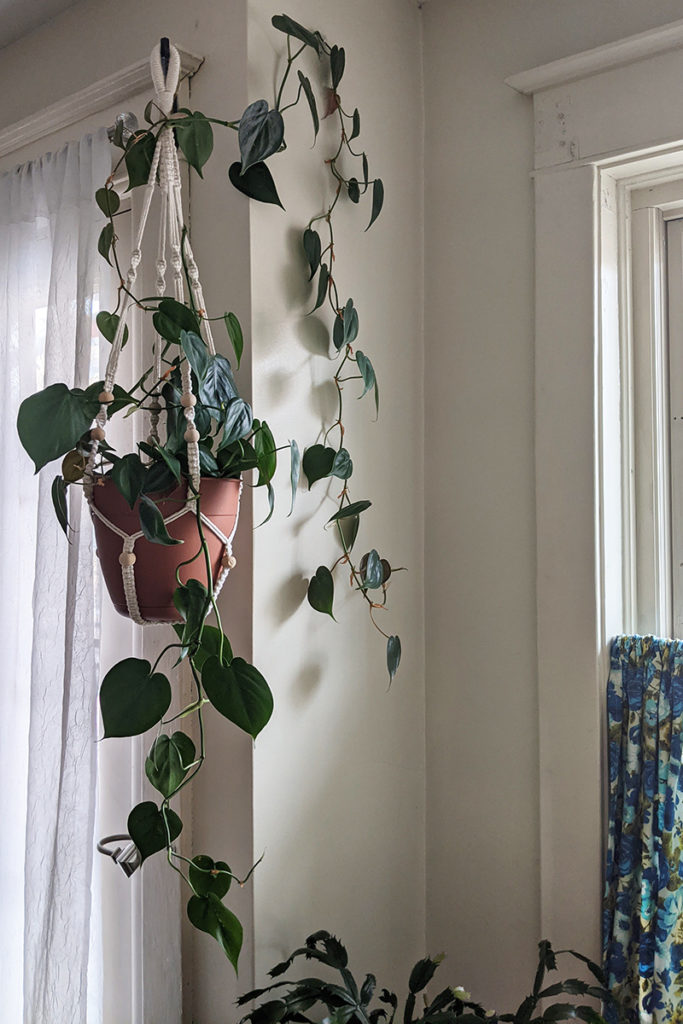
Yup, pothos are great. And they grow quickly. And how about all those cool leaf variations? But I’d like to submit for your approval another philodendron, the Philodendron hederaceum, or heartleaf philodendron.
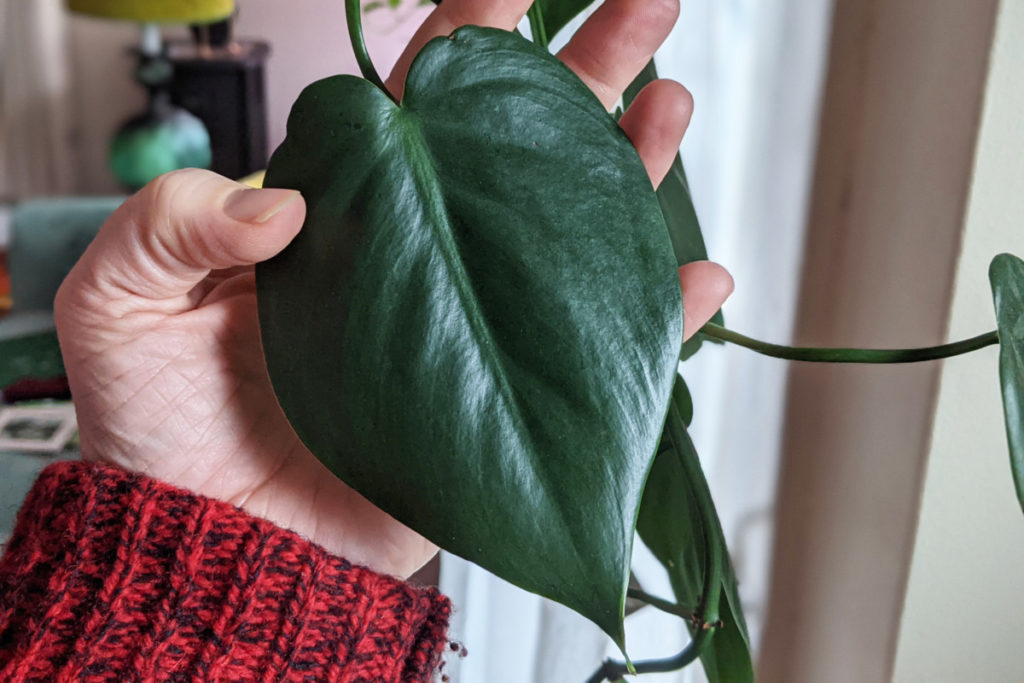
If you’re looking for a trailing houseplant that grows quickly, skip the pothos and get a heartleaf philodendron instead. They grow much faster, and because their leaves are bigger than pothos, the plant appears bigger in general. You can’t beat a heartleaf if you’re looking to green up a large space fast.
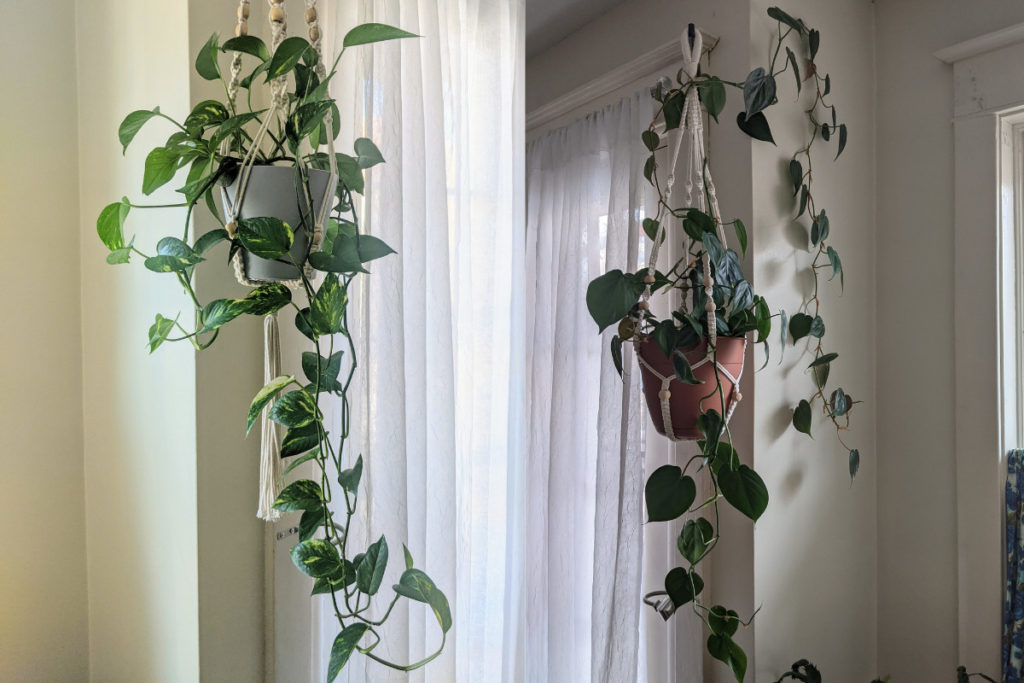
I find my heartleaf is much easier to train to climb, too; the shape of their vines is a bit easier to manipulate.
The heartleaf philodendron thrives in the same conditions as pothos. They prefer bright indirect sunlight, well-draining soil and comfortable temperatures of around 65-75 degrees Fahrenheit. Like most tropical plants, they prefer humidity. If your home is on the drier side, mist your plant once or twice a week.
To encourage bushier growth, you can pinch back the plant, and it will put out new growth closer to the pot.
2. Holiday Cactus
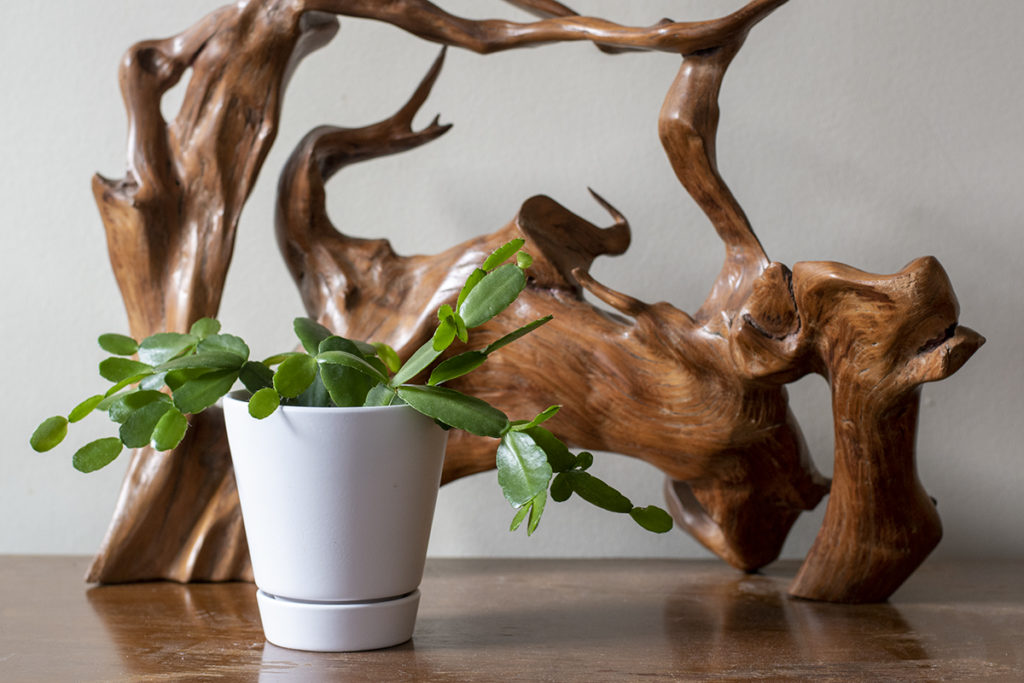
I often feel that holiday cacti are overlooked in the current houseplant craze because of their prevalence, especially around the holidays. I’ve even seen them for sale in a pharmacy at Christmas time.
However, don’t let their commonality fool you; this “grandma plant” has a lot to offer. Namely, it will probably outlive every other plant in your home. Schlumbergera can live for generations. It’s not uncommon for these plants to be passed down in families.
Their appeal lies in their flowers. Holiday cacti are one of the few houseplants that will bloom regularly indoors. All it takes is a little know-how to enjoy gorgeous, showy blooms for several weeks out of the year.
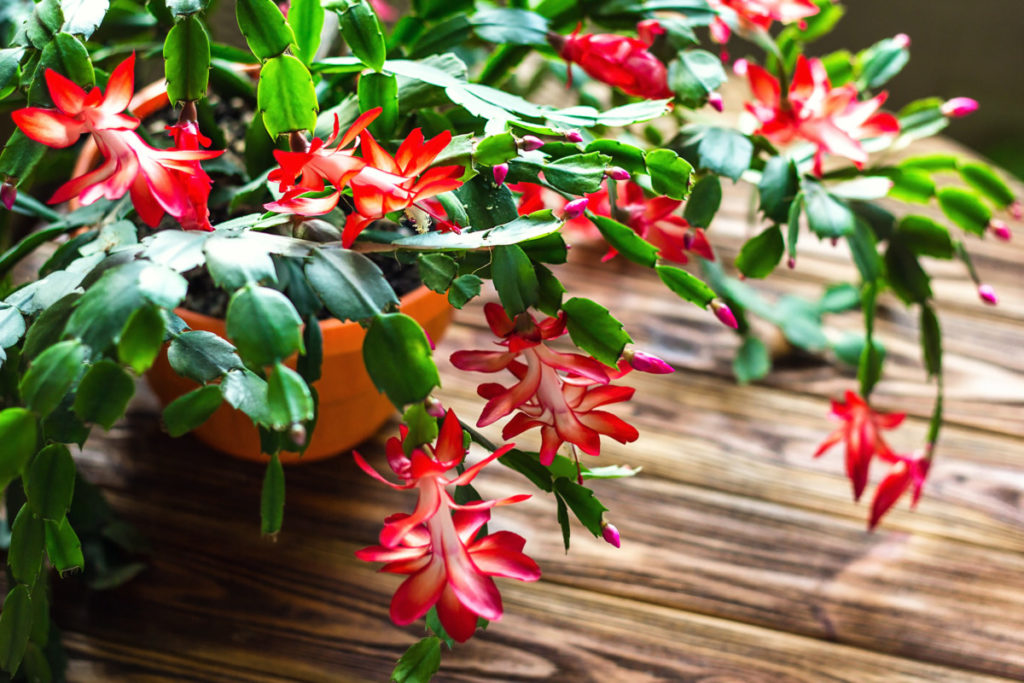
Schlumbergera species, or holiday cactus, are named after the holiday they bloom closest to – Thanksgiving, Easter and Christmas.
Most everyone refers to them as Christmas cactus, but nearly all of the ones sold in stores and nurseries these days are Thanksgiving cactus or Schlumbergera truncata. Schlumbergera × buckleyi, true Christmas cactus, are a little harder to find but not unobtainable, like, say, a white variegated monstera.
And while they may start on the smaller, unimpressive side, it doesn’t take long for them to grow into dramatic fountains of greenery. They make an impressive statement on a tall plant stand by themselves.
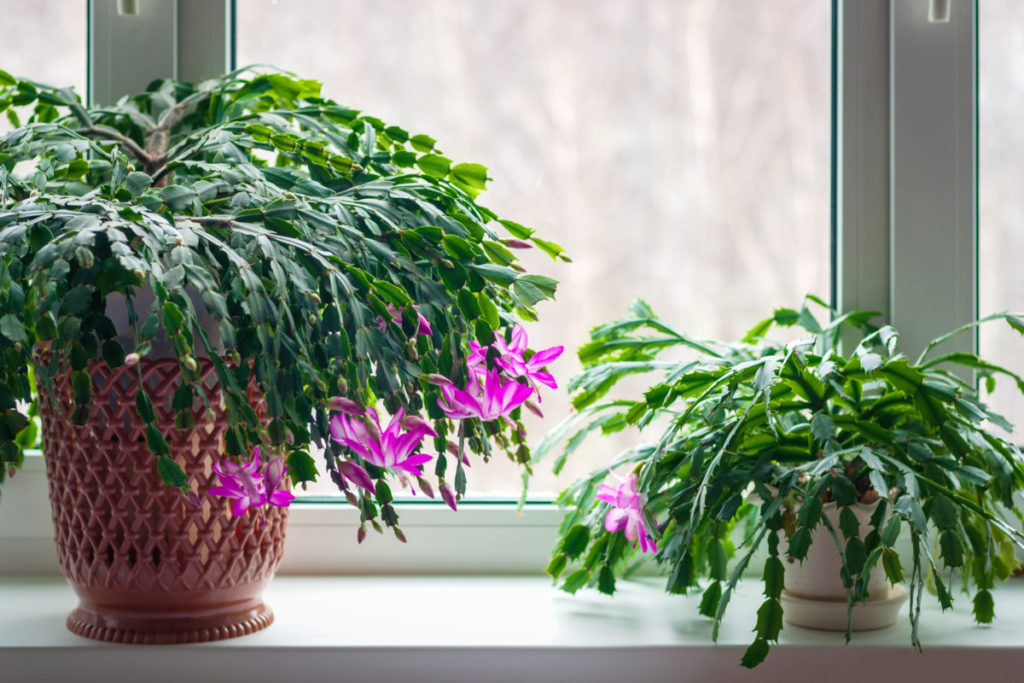
You can read all about their care, feeding and how to get them to bloom in my piece:
Christmas Cactus Care: More Blooms, Propagate & Identify Holiday Cacti
But in general, these epiphytes prefer loose soil, bright indirect light and lots of humidity. Placing your plant on a tray of pebbles is a great way to make sure they are happy, and they prefer the same temperatures you and I do. They do not like wet feet but shouldn’t dry out completely between waterings.
Related Reading: How To Propagate Christmas Cactus & 2 Secrets To Big Blooms
3. Umbrella Plant
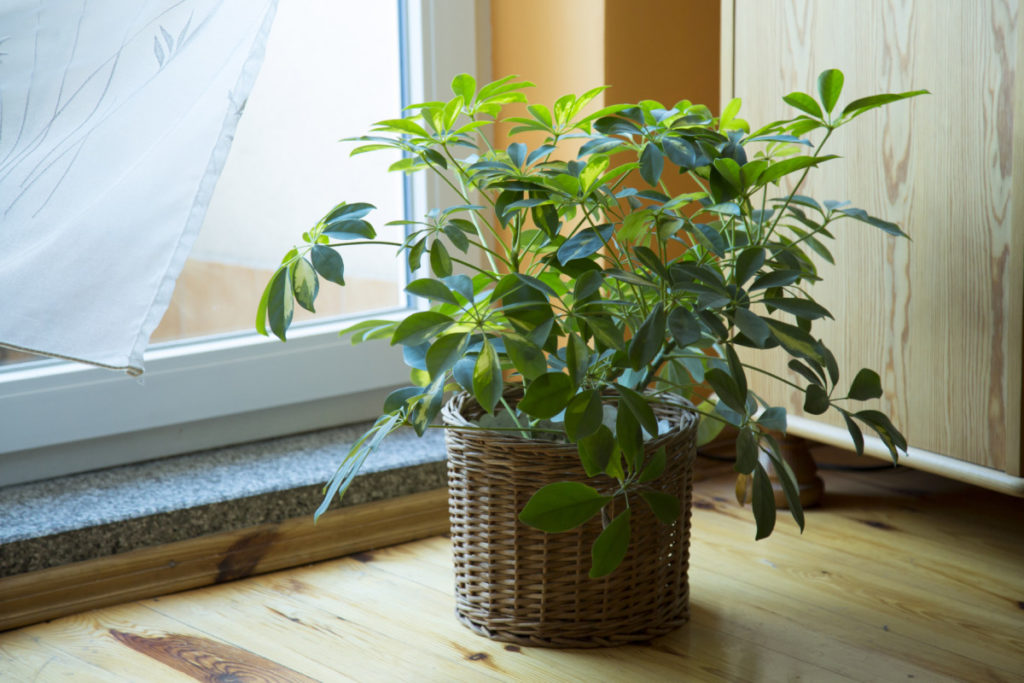
Ah, the umbrella plant, seen in every mall food court in America. Probably not a ringing endorsement for adding one to your collection, but hear me out.
Schefflera arboricola, more commonly known as the umbrella plant, is simple to care for. They can grow quite large, around 6 feet indoors with the proper sized pot, or make a perfect small plant remaining compact. To encourage height, you’ll want to grow them in deeper, larger pots.
They are tolerant of temperatures on the cooler side, the mid 50s, making them a great choice if your place is on the cooler side.
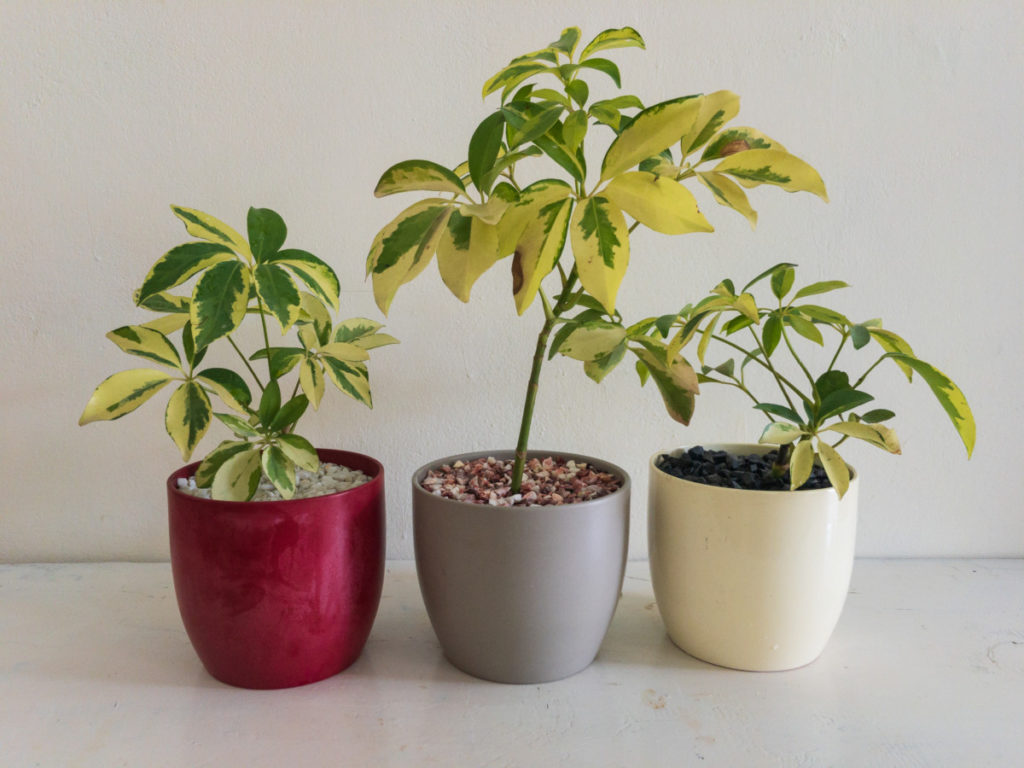
Their foliage is unique, too, a rosette of 6-9 oblong leaves growing from the center on stems like an umbrella. The leaves are shiny dark green and can have variegation in either white or gold. The variegated varieties aren’t hard to get a hold of or prohibitively expensive, making them a great choice for anyone who loves the look of green and white leaves.
The Schefflera arboricola looks very different from many of the most popular plants these days, which makes it perfect for the collector looking for something different to grace their homes.
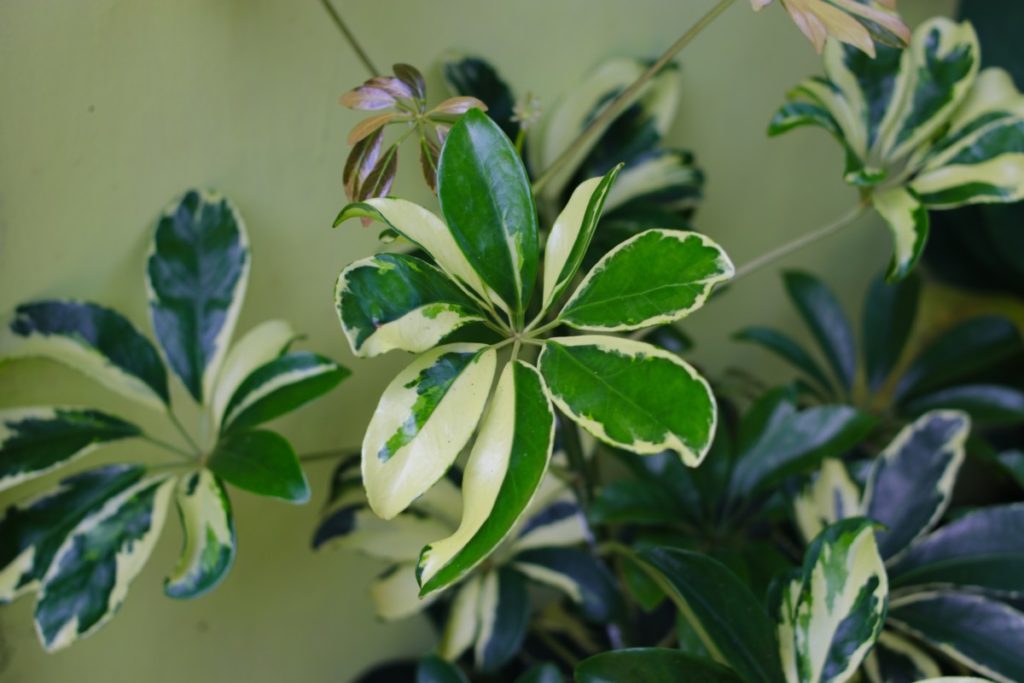
Umbrella plants require similar care to many other tropical plants, well-draining soil, bright indirect sunlight and keep them from sitting in water.
Their fertilizing needs are minimal, but a general fertilizer used at half strength every watering will go a long way to help if you’re encouraging height. Once a month, skip the fertilizer and flush the soil with fresh water to prevent salts from building up.
4. African Violets
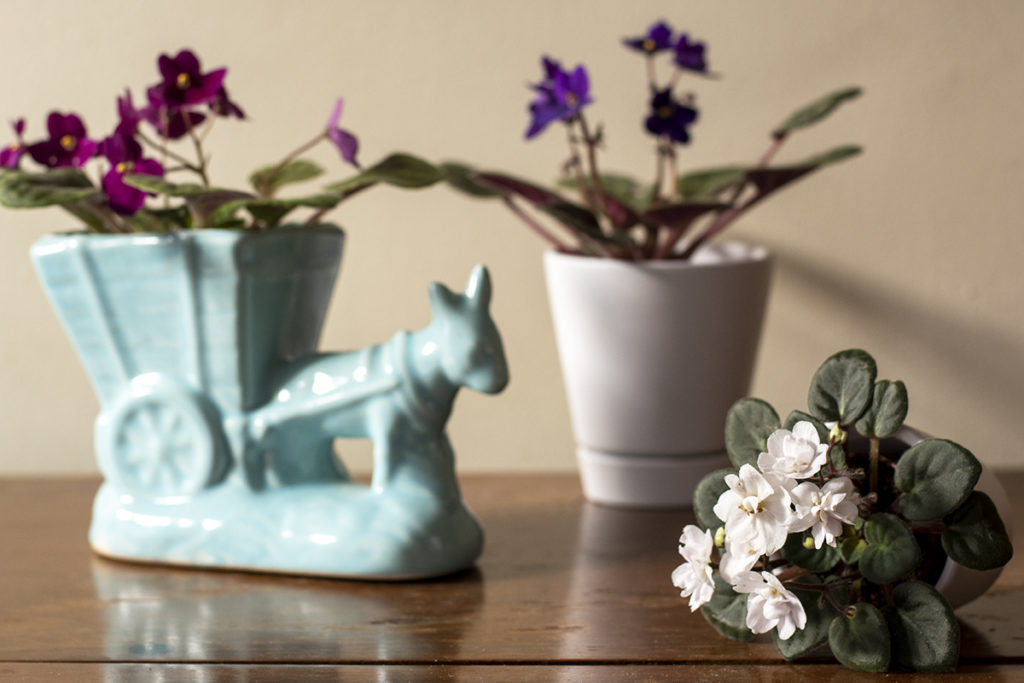
African violets are yet another often snubbed plant because they are so commonplace. They also have a reputation of being a “grandma plant.” But every houseplant lover should have an African violet or two.
These charming plants are one of the few houseplants that will bloom continuously with the proper care. Many folks who have African violets complain that they never bloom; however, once you figure out what the plants need, you will be rewarded with blooms nearly year round.
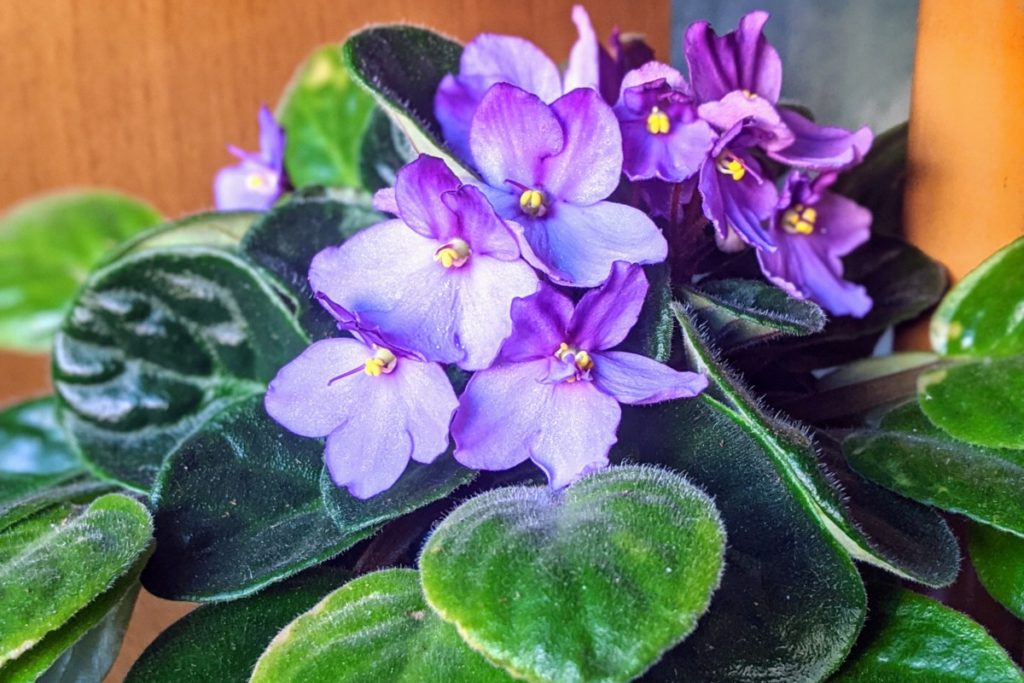
I’ve written up a complete care guide for these tiny little blooms.
African Violets: How To Care, Get More Blooms & Propagate
African violets are another common houseplant with some pretty wild hybrids and varieties if you just take a closer look. Etsy and The Violet Barn are my two favorite places to find interesting violets.
I will warn you, though, that your violets may outnumber your other plants once you start collecting.
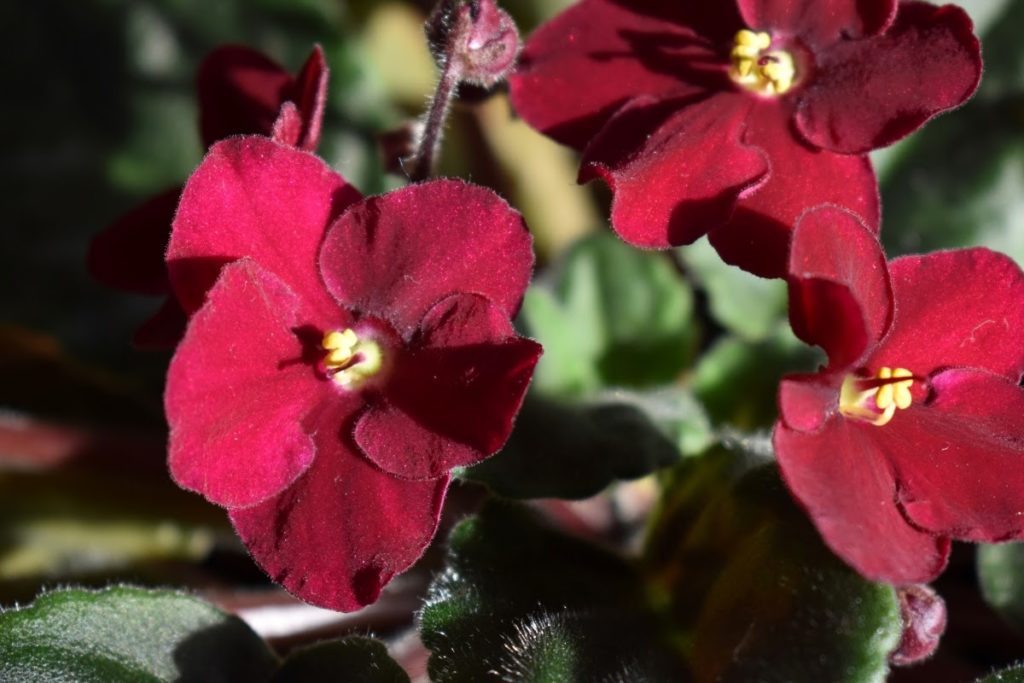
These tiny plants are perfect for the houseplant parent who doesn’t have much space. They prefer bright, indirect light and need to be a little root bound to bloom.
Fertilize at half strength at every feeding to encourage blooming. They do not like wet feet and are susceptible to root rot. Water them from below and be sure they don’t sit in water.
Give them a pebble tray to increase humidity and keep the temperature between 65-75, and you will have a happy, blooming African violet.
5. Hoya
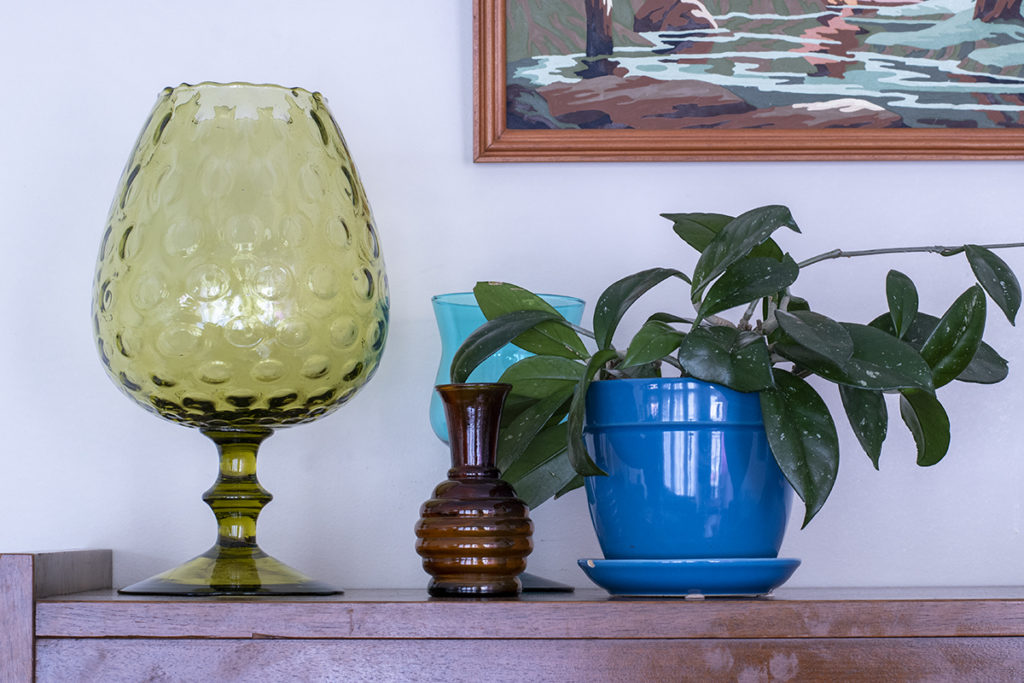
I remember the first time I saw a hoya. I visited a dear friend, and she had the weirdest looking plant on her table. It almost looked fake with its thick, waxy leaves. As my visit was nearing the end, I asked what the plant was. She said she had no idea, only that it had been her mothers, and asked if I wanted a cutting.
If a friend offers you a plant cutting, you always say yes.
And that was four years ago, now look at my little Hoya carnosa. These plants are so cool; I do not understand why more people aren’t growing them. The Hoya kerii, the heart-shaped hoya, are the ones you’ll see all over Instagram, but the Hoya carnosa has so much more character.
Hoyas are another plant that will reward you with the most stunning flowers when given the love and attention they need. Hoya is known as the wax plant and as porcelain flower because of the texture of their flowers.
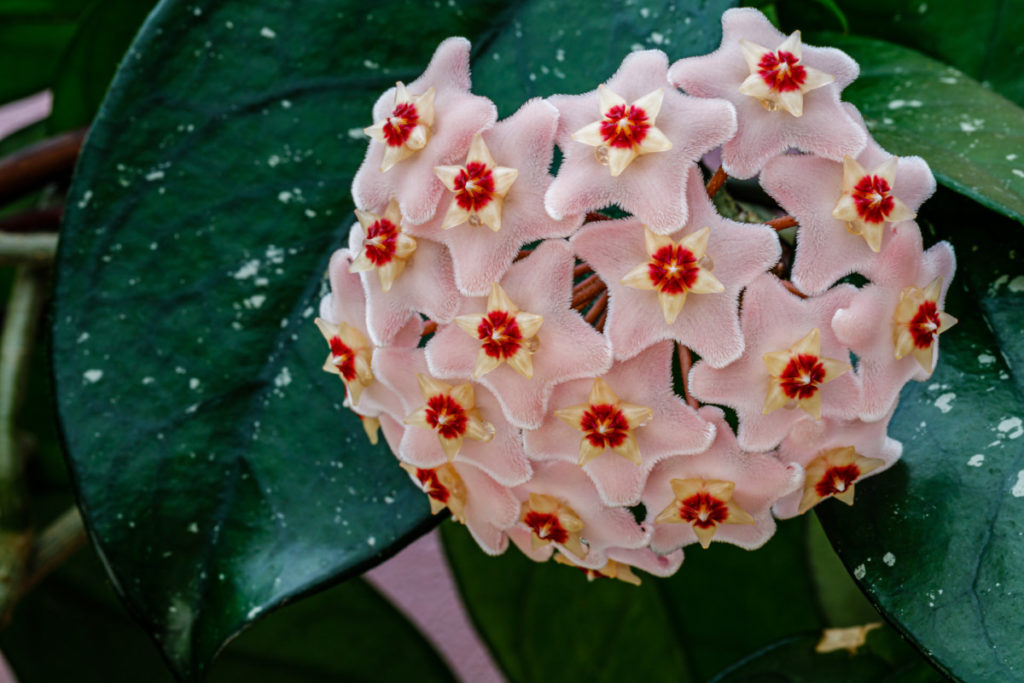
It’s not uncommon to train hoya to grow around a small wire support, giving them a little structure and fullness.
Hoya are epiphytes, meaning they grow up trees and in the crevices of rocks. They require light soil with bark chips, like an orchid mix. Hoya need humidity which you can provide with a pebble tray. Keep them warm and don’t water them too frequently, and they’ll grow for decades.
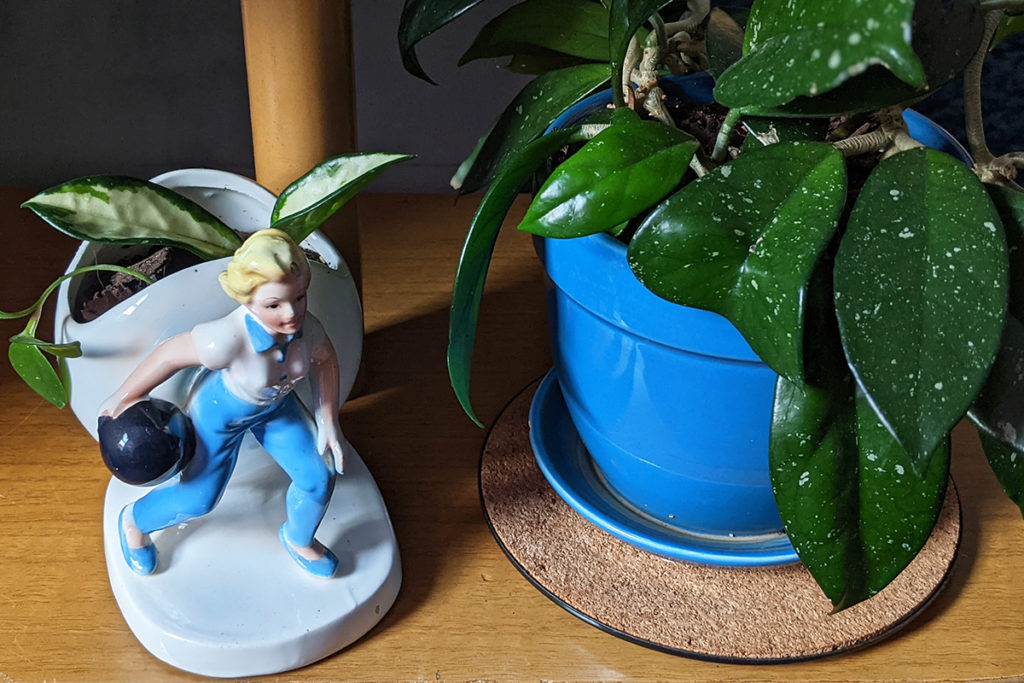
Dark, shiny leaves and sweet, stunning flowers, what’s not to love?
6. Nerve Plant
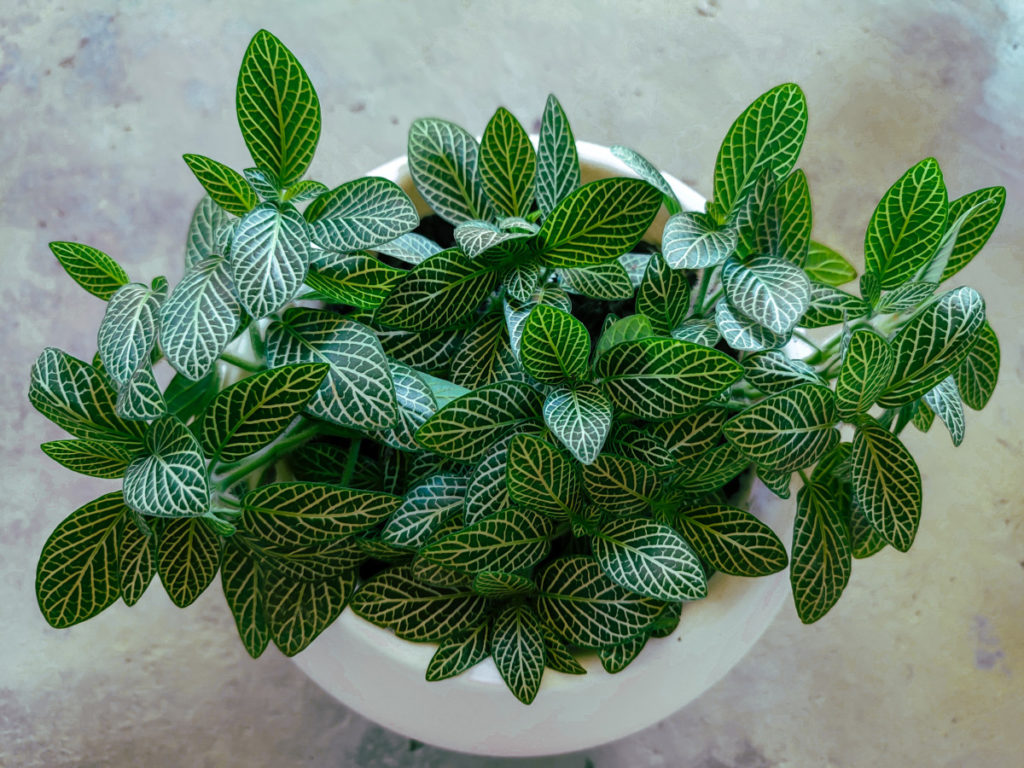
Fittonia albivenis, also known as nerve or mosaic plant, has some of the most striking leaves you’ll ever find on a houseplant. Add to that how hard they are to kill, and for the life of me, I can’t understand why they aren’t more popular.
Perhaps it’s because they tend to be a tad finicky; they require a lot more humidity than your average houseplant. That being said, if you’re up for the challenge, the nerve plant is a show-stopping plant.
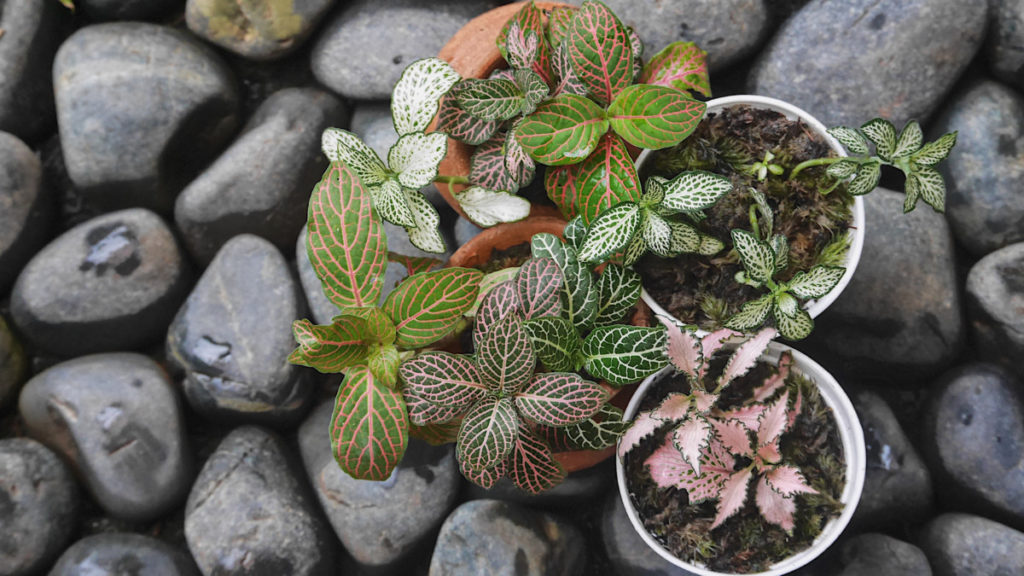
Deep green leaves are shot through with striking white, red or pink veins.
No matter where you put them, they’re sure to catch your eye.
Nerve plants are low growing but will creep and spread if given the opportunity, and in some areas, are planted outside as a ground cover. Like most houseplants, their native habitat is lush rainforests, where they creep along the ground in low light.
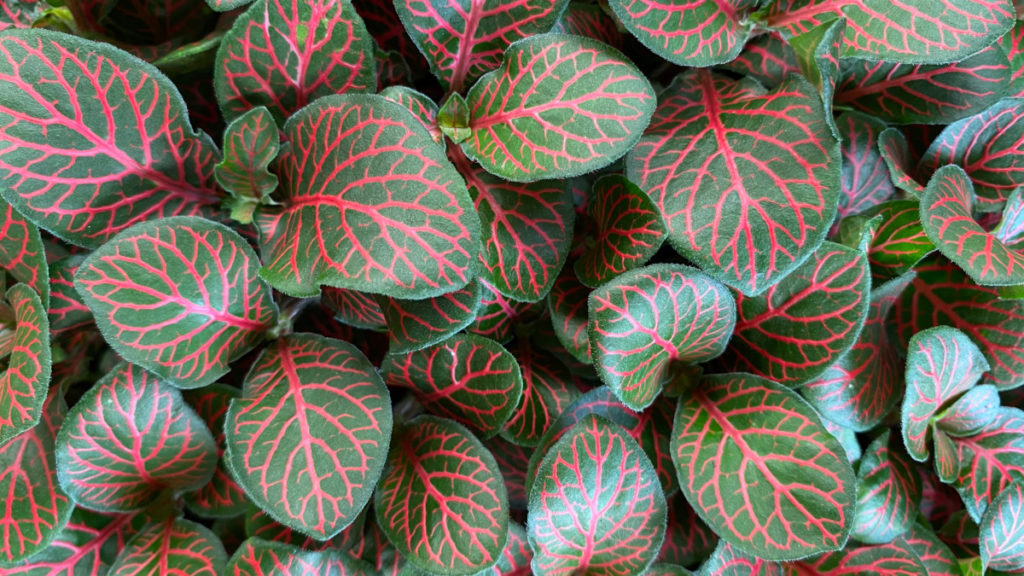
This is one plant that you rarely need to worry about overwatering. They prefer to be kept moist and enjoy a high level of humidity. If you’ve wanted to try your hand at building a terrarium, this is the perfect plant. Or, if you’ve got a low-light, high steam bathroom, consider adding a nerve plant to your décor.
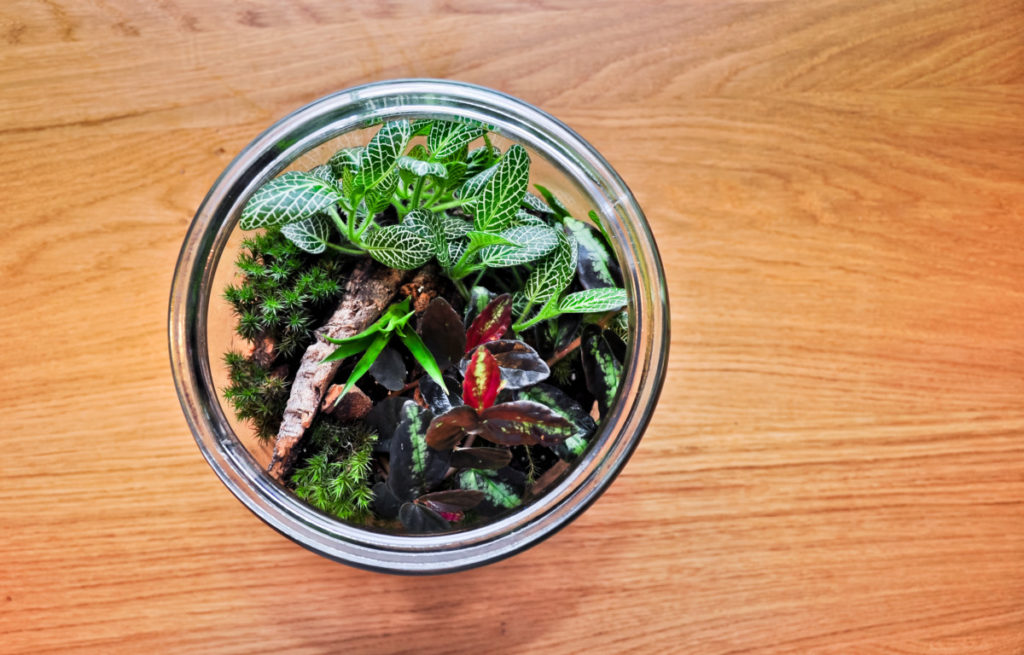
Like their native habitat, nerve plants require lots of warm, moist air and will quickly look bedraggled if they dry out. A drink usually perks them right back up. Choose a soil that will hold moisture and consider growing the nerve plant in a terrarium or other humid environment.
7. Peace Lily
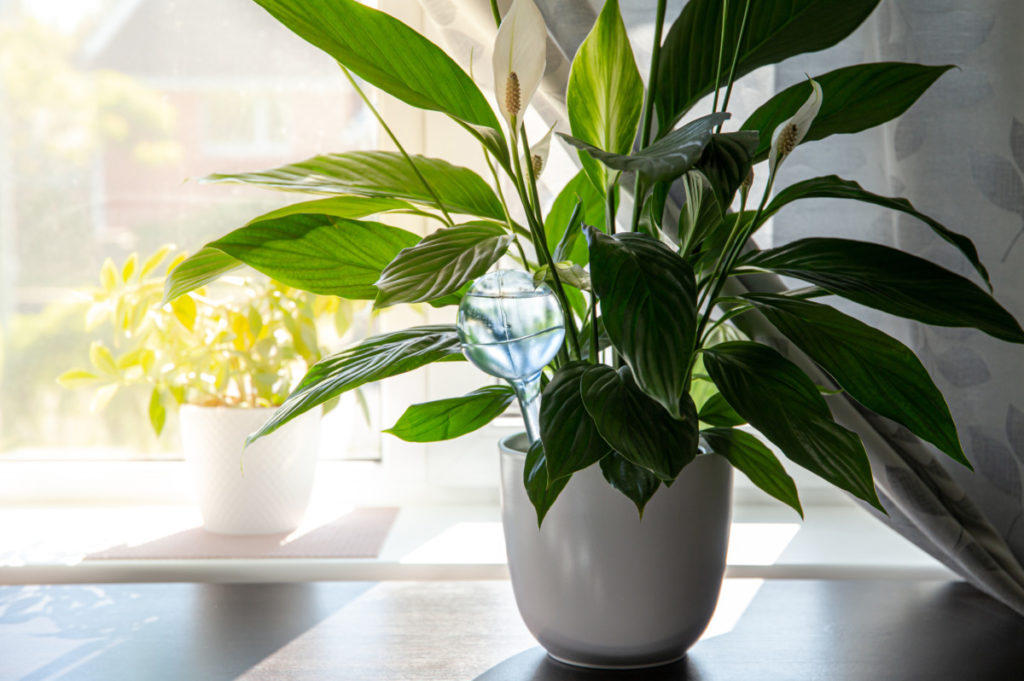
Peace lilies were popular back in the 80s, and with all things that go out of style, it stands to reason that the peace lily will find its way back into the spotlight again. Why not now?
The Spathiphyllum has a minimalistic beauty, with its deep emerald leaves and the clean lines of its bracts. If ever a houseplant exuded elegance, the peace lily is it. Everything about them says tropical opulence.
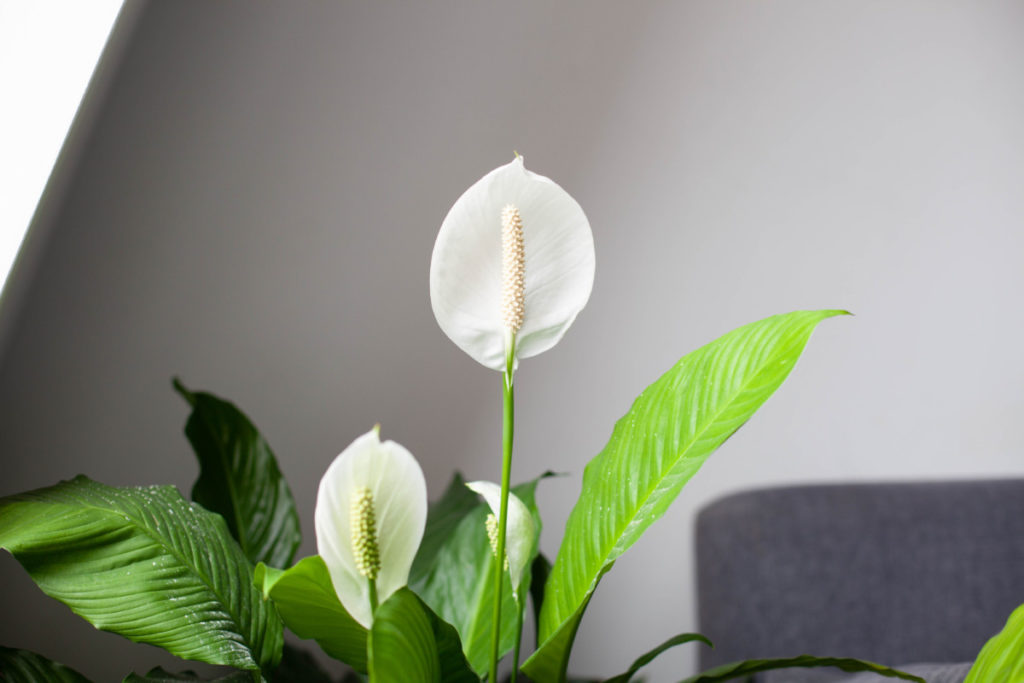
If you’re looking to make a statement, then a single, well-cared-for peace lily is just the plant.
And that’s part of why these plants aren’t nearly as popular as they used to be; they’re a tad on the fussy side to keep. They need to be kept moist, but not too moist, and they like bright light but prefer diffused light. They will wilt and brown if they receive too much light.
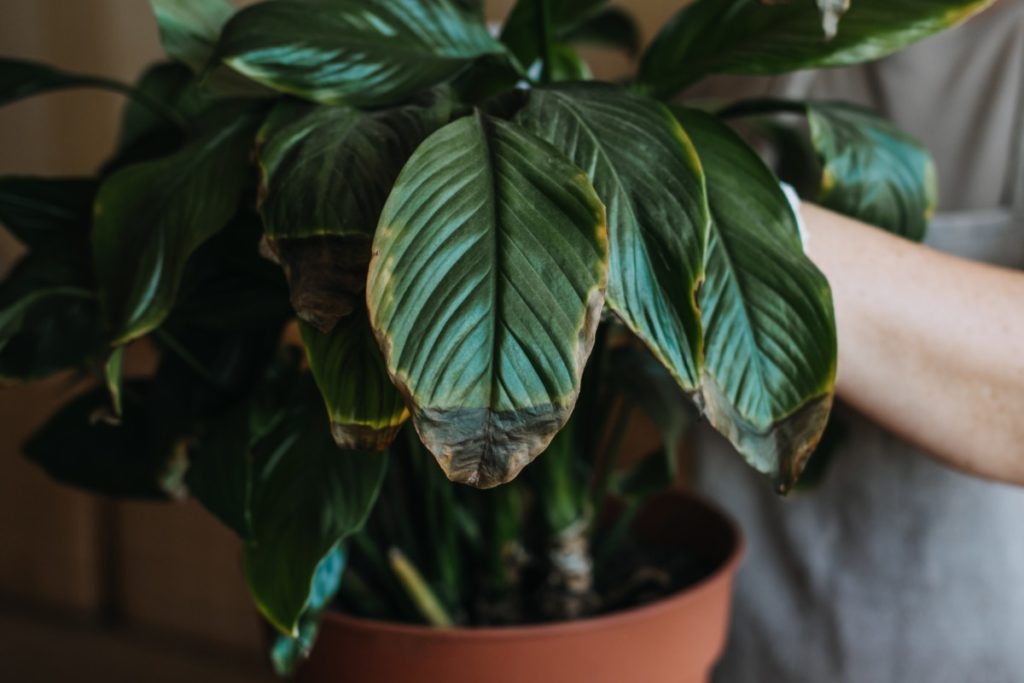
However, care isn’t that difficult once you find the right spot in your home. If you’re dreaming of the perfect 80s seafoam and mauve décor with dried pampas grass and brass, you have to have a peace lily as well.
8. Arrowhead
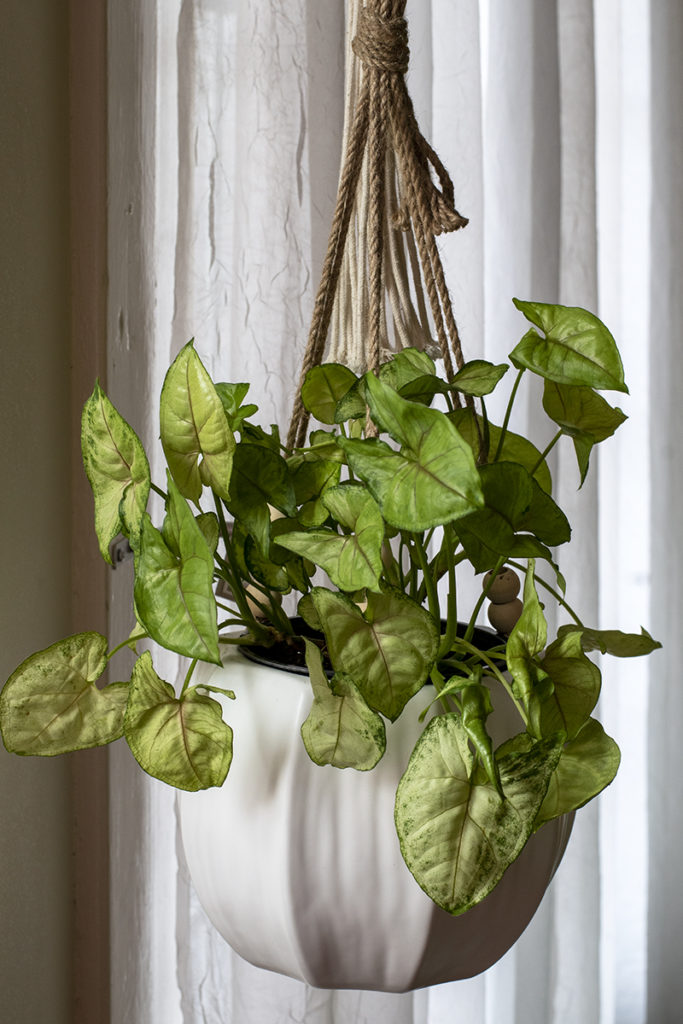
If you love the thrill of seeing a new leaf unfurling, the arrowhead, or Syngonium podophyllum, is the plant for you. Rarely does a week go by that my arrowhead doesn’t have a new leaf on it. Unlike so many plants, the arrowhead will reward you with new growth nearly all year long.
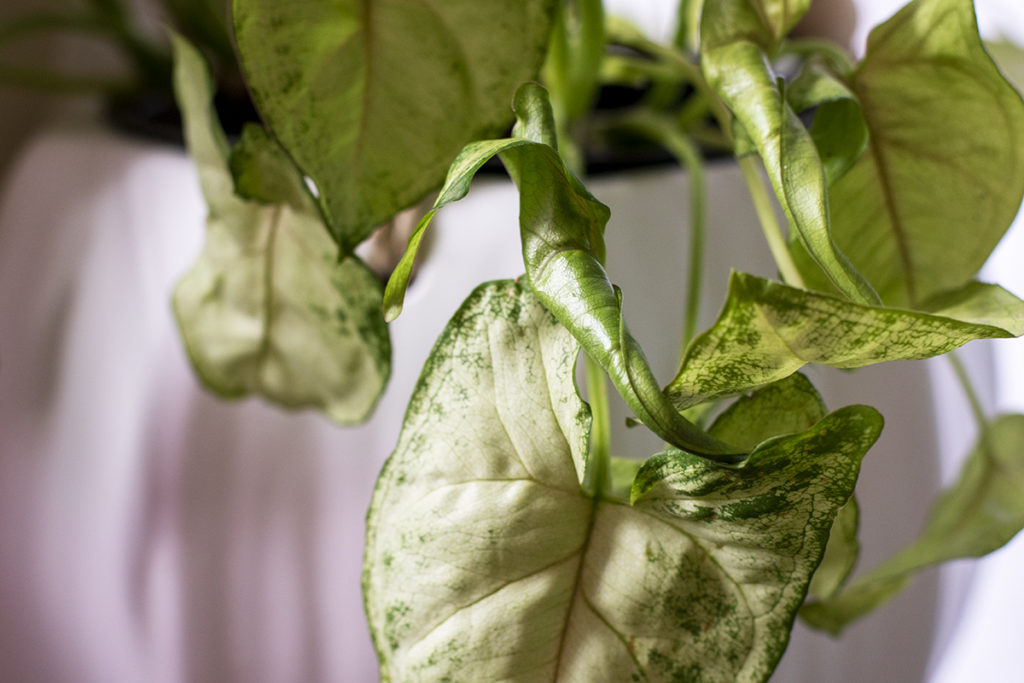
One of the cool things about this plant is that it starts out growing as a compact bush but will begin to vine over time. It’s a great plant for a hanging basket.
As the name implies, the leaves are arrowhead-shaped and, depending on the variety, may be veined in pink or dark green. As the plant matures, the leaves will take on a more finger-like shape with 3-5 lobes. This is another plant that has quite a few options when it comes to colors; the leaves can be soft green or pink, or dark green.
Variegated plant lovers will want to add one of these to their collection.
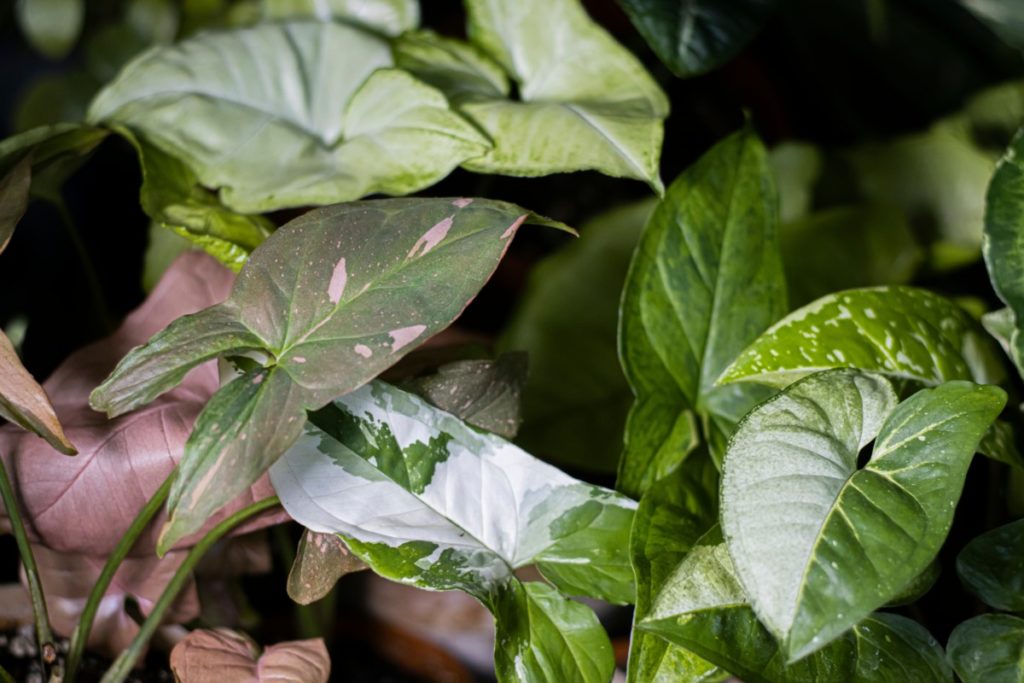
The arrowhead prefers well-draining soil and monthly fertilizing. Keep the plant in a high-humidity area or use a pebble tray if necessary. They prefer bright indirect sunlight and can be kept outdoors in the warmer months in an area that doesn’t receive direct sun.
9. Tradescantia
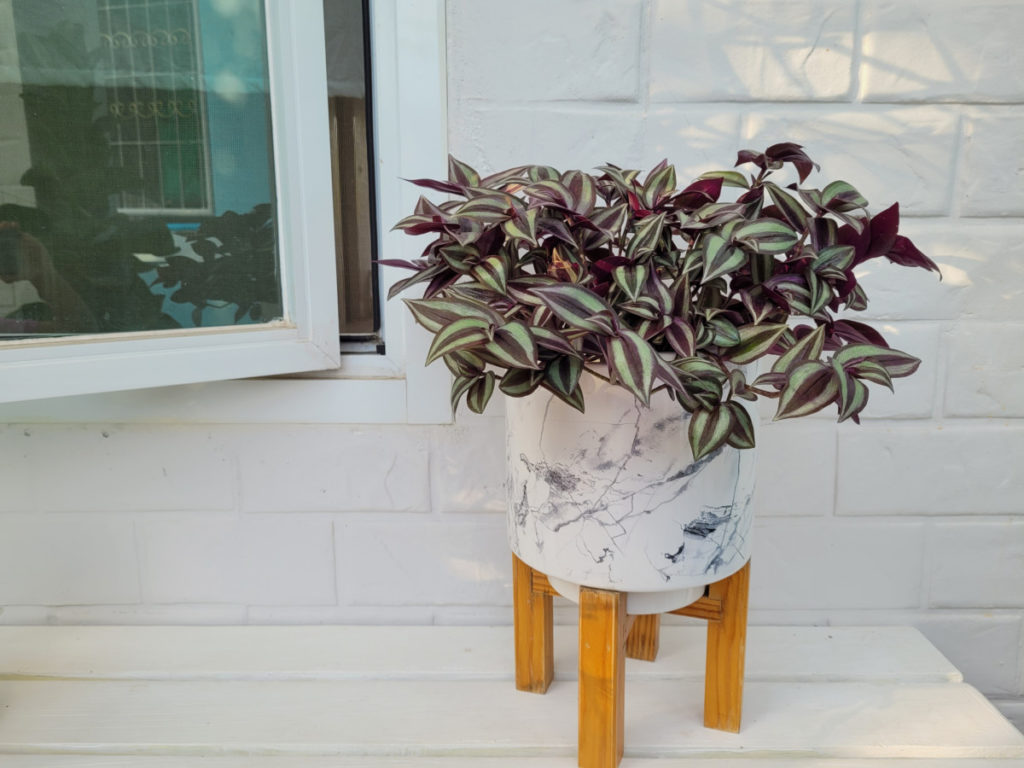
Tradescantia, Spiderwort or Wandering Dude is a beautiful vining plant that practically propagates itself. These houseplants can tolerate low light, although they may lose their vibrant colors. They will flourish in bright, diffused light and can be grown outside in some areas.
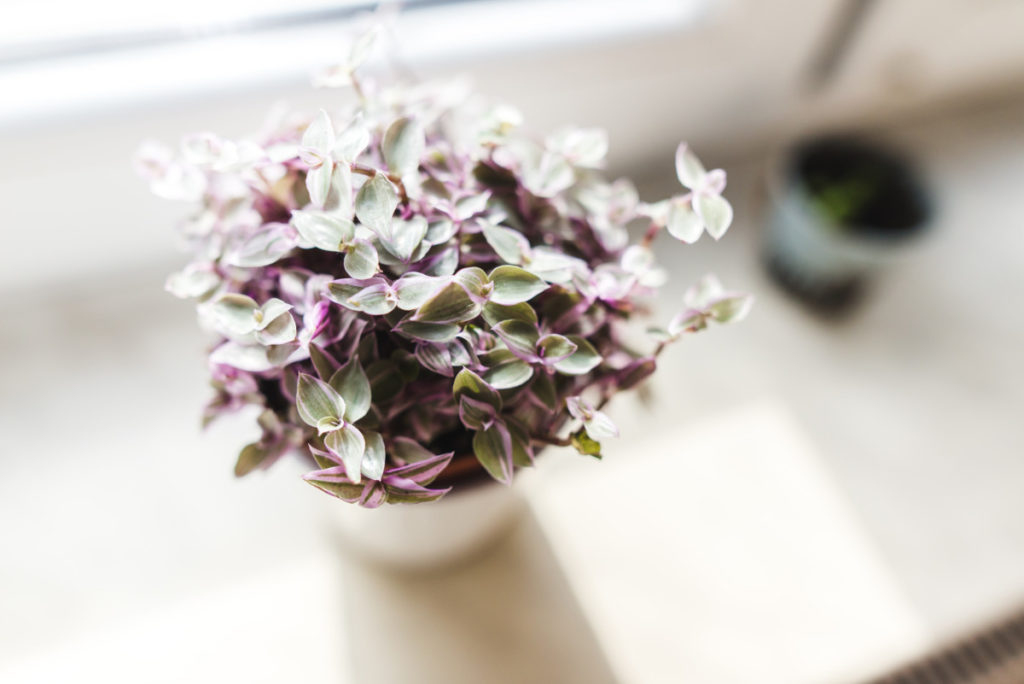
The leaves of several varieties have an almost silvered appearance, and they’re easy to train to grow into bushy hanging plants or long creepers. Spiderwort makes the perfect hanging plant.
If you love visually striking plants, you’ll want to take a look at all of the beautiful varieties of tradescantia.
There are plenty to choose from, deep emerald and burgundy, sage and mauve, lime and pale pink.
And for something unique and interesting, consider a Tradescantia Hijau Baru, more affectionately known as teddy bear tradescantia for its incredibly soft, fuzzy leaves.
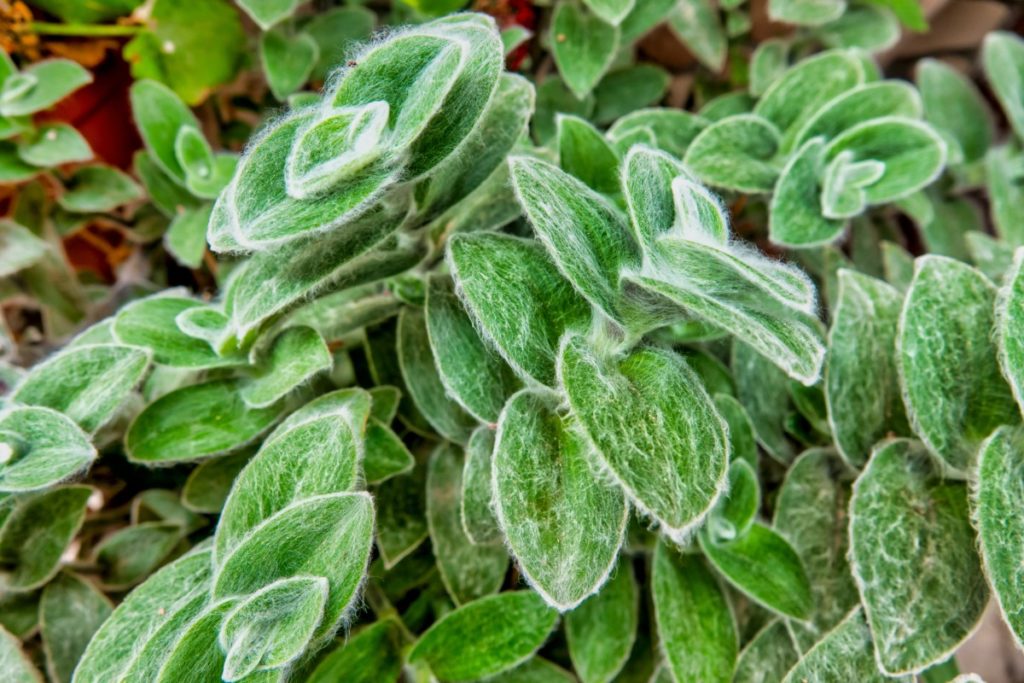
Choose well-draining soil, and let the plant dry out between waterings. They prefer temperatures between 65-75 and a light misting of their leaves now and then. Pinch them back hard and short to encourage a bushier plant.
Who knows, maybe by the time you read this, these plants will be hot on Instagram, and you’ll be looking for the next houseplant sensation.
At the end of the day, don’t forget that your plants should make you happy, and it doesn’t matter what’s on social media. Enjoy your beautiful green babies.

Get the famous Rural Sprout newsletter delivered to your inbox.
Join the 50,000+ gardeners who get timely gardening tutorials, tips and tasks delivered direct to their inbox.

